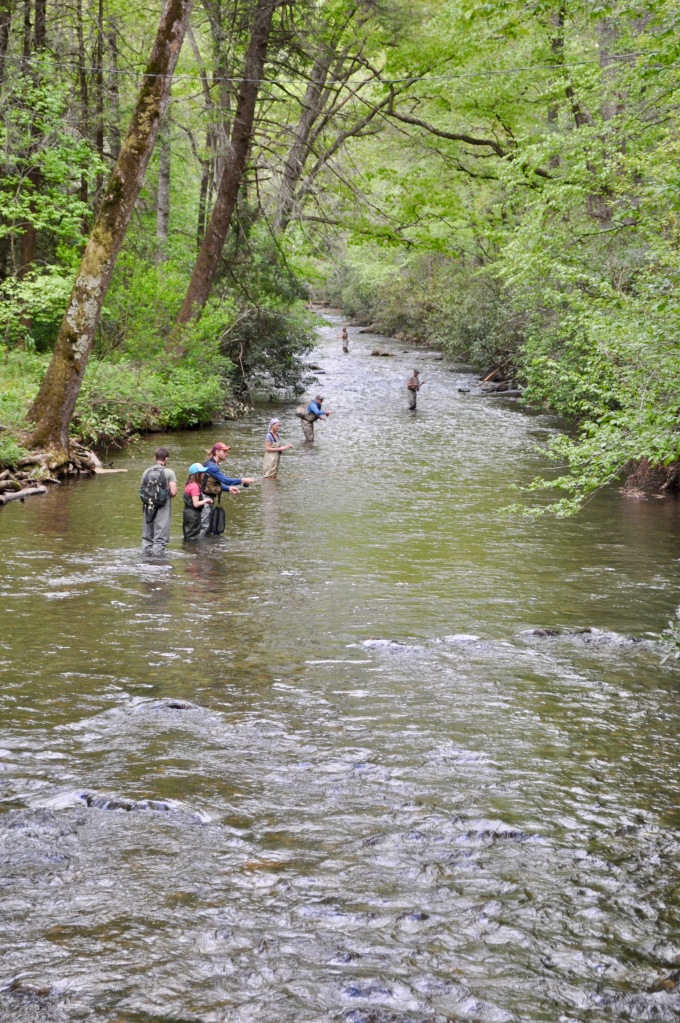
The FBRP Water Quality Group has been active since the Partnership began, working to better understand stressors in the watershed, to develop projects and approaches that would reduce impacts and improve water quality, and to seek funding to enable this work on a scale larger than our partners organizations can do alone.
Priorities:
- Pursuing connections with communities of Asheville, Black Mountain, Montreat, Fletcher and Waynesville in three focal watersheds (Swannanoa River, Cane Creek, and Richland Creek)
- Looking for partners to address the newly listed impaired section of the FBR from Long Shoals Rd. to Craggy Dam
- Continuing outreach to the agricultural community to get them involved in the Partnership
- Considering the construction of a display reporting live river conditions in the River Arts District
Past accomplishments include:

- Reducing stormwater impacts from cities and towns by improving streamside buffers and advocating for green infrastructure–Partners met with City of Asheville to discuss stormwater issues; established Stormwater Task Force. Group received DEQ Watershed Action Plan training for virtual plan development that will enable us to better evaluate stormwater effects.
- Developing relationships with agricultural and working lands representatives to help farmers improve practices related to runoff, erosion, and stream impacts, and to preserve land value.
- Evaluating the development of new funding sources to support such work
- Selecting three focal areas to work on: Cane Cr., Richland Cr., and Upper Swannanoa
- Holding field trainings on how to input “impact” data into DEQ system
- Meeting bimonthly to report on activities, discuss projects and various groups’ results and
- Providing and uploading information about the watershed and WQ on the FBRP website
- Uploading information to develop a Watershed Action Plan for Cane Creek in Fairview, Richland Creek in Waynesville and the Upper Swannanoa River in Black Mountain and Montreat.
Membership
- Co-chair – Anne E. Keller, retired US EPA, RiverLink Board, akeller11@comcast.net
- Co-chair – Tim Fox, NCDEQ, tim.fox@ncdenr.gov
- Jane Margaret Bell–Environmental Scientist
- Michelle Pugliese–Southern Appalachian Highlands Conservancy
- Mary Roderick–Land of Sky Regional Council
- Ann Marie Traylor–Environmental Quality Institute
- Preston Jacobsen and Mackenzie Tenan–Haywood Waterways Association
- Suzanne Klimek–Haywood Waterways Association Board Chair
- Zan Price–Jennings Environmental
- Dave Penrose–Penrose Consulting
- Michelle Pena Ortiz–Environmental Quality Institute
- Renee Fortner–RiverLink
- Jason Mays–U.S. Fish and Wildlife Service
- Rachael Hoch–North Carolina Wildlife Resources Commission
- Jason Doedderlein
- Jason Green–Duke Energy
- Michael Knoerr–NRCS
- Luke Etchison–North Carolina Wildlife Resources Commission
- Greg Jennings–Jennings Environmental
- Maria Wise–Mills River Partnership
